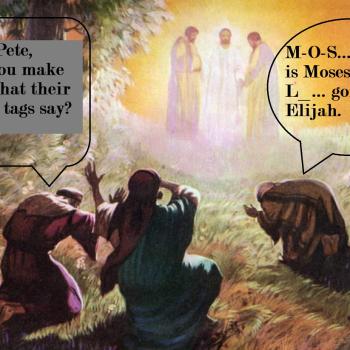Mike Bird recently undertook the exercise of assembling Paul’s scattered references to the story of Jesus into a narrative whole, using the wording as found in his letters. The result is interesting, to say the least. Mike offers two versions of Paul’s “story of Jesus” created from a pastiche of specific excerpts from Paul’s letters. Here is one of them:
The gospel concerning his Son, when the fullness of time had come, God sent his Son, who he promised beforehand through his prophets in the holy scriptures, a Son born of a woman, born under the law, descended from the seed of David, in order to redeem those who were under the law. The messiah became a servant of the circumcised on behalf of the truth of God in order that he might confirm the promises given to the patriarchs, with various commands, words, and his example. On the night when he was betrayed, the Lord Jesus took a loaf of bread, and when he had given thanks, he broke it and said, “This is my body that is for you. Do this in remembrance of me.” In the same way he took the cup also, after supper, saying, “This cup is the new covenant in my blood. Do this, as often as you drink it, in remembrance of me.” Then he humbled himself and became obedient to the point of death — even death on a cross. Indeed, before your eyes Jesus was publicly crucified by the rulers of this age. The Messiah, our paschal lamb, has been sacrificed, crucified for our sins in accordance with the scriptures. He was buried, he was raised on the third day in accordance with the scriptures, and after that he appeared to Cephas, then to the twelve. Then he appeared to more than five hundred brothers and sisters at one time, most of whom are still alive, though some have died. Then he appeared to James, then to all the apostles. God highly exalted him and gave him the name that is above every name, so that at the name of Jesus every knee should bow, in heaven and on earth and under the earth, and every tongue should confess that Jesus Christ is Lord, to the glory of God the Father. And now we wait for his Son from heaven, whom he raised from the dead — Jesus, who rescues us from the wrath that is coming. May the God of peace himself sanctify you entirely; and may your spirit and soul and body be kept sound and blameless at the coming of our Lord Jesus Christ.
There are numerous hints at more substantive knowledge of the Gospel tradition of many intriguing sorts. For instance, when Paul talks about Christians as a living temple, and that we have a tabernacle not made with human hands, there is so much more to explore than I had time to go into in my book chapter about the historicity of the temple saying in John, which was published in John, Jesus, and History volume 2. What do you think of this? It is helpful to the historian, and helpful as part of an effort to address mythicist misinformation that drives an exaggerated wedge between Paul’s letters and the Gospels.
This post also reminds me that I still need to catch up on long-overdue blogging about books that were sent to me for review. One such book is David Allen’s The Historical Character of Jesus: Canonical Insights from Outside the Gospels. I hope to get to that soon. In the meantime, see also the early version of David B. Capes’ reference article on “Jesus Tradition in Paul’s Letters” for the Routledge Encyclopedia of the Historical Jesus as well as James D. G. Dunn’s “Jesus Traditions in Paul” published in Studying the Historical Jesus (and available in the Google Books preview). Bob Cornwall reviewed Dunn’s (broader) book, Jesus According to the New Testament. F. F. Bruce’s article “Paul and the Historical Jesus” is available for free online. And don’t miss Gregory Jenks’ post about what Paul says about his own life.
Finally, an image that came my way via Facebook:

I think what it depicts is less the case today than was true in the past. But it might be useful as a humorous way into a discussion of the proportions of material in the New Testament by and about Paul, even if the first thing you do with it is to problematize it.

















